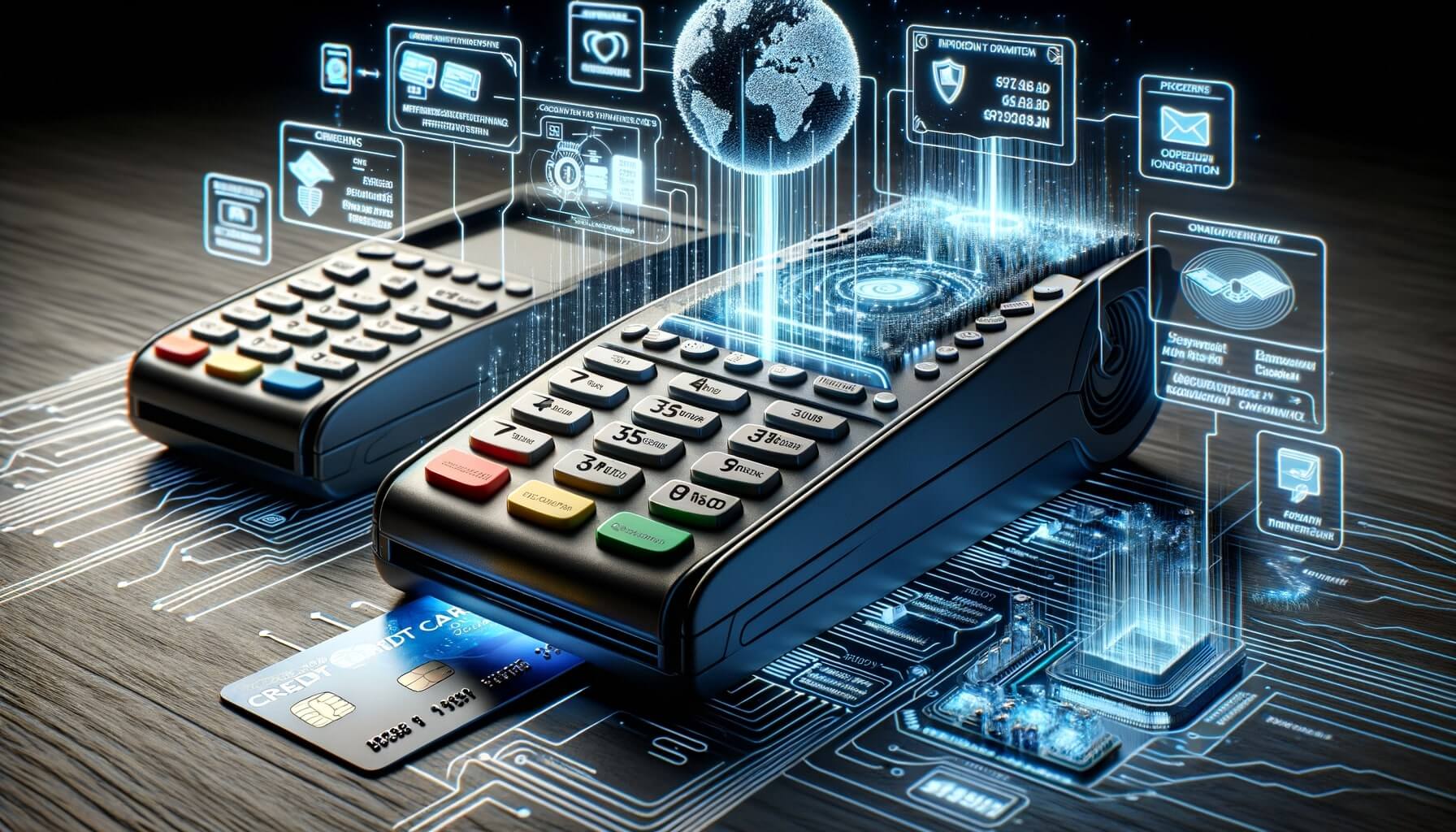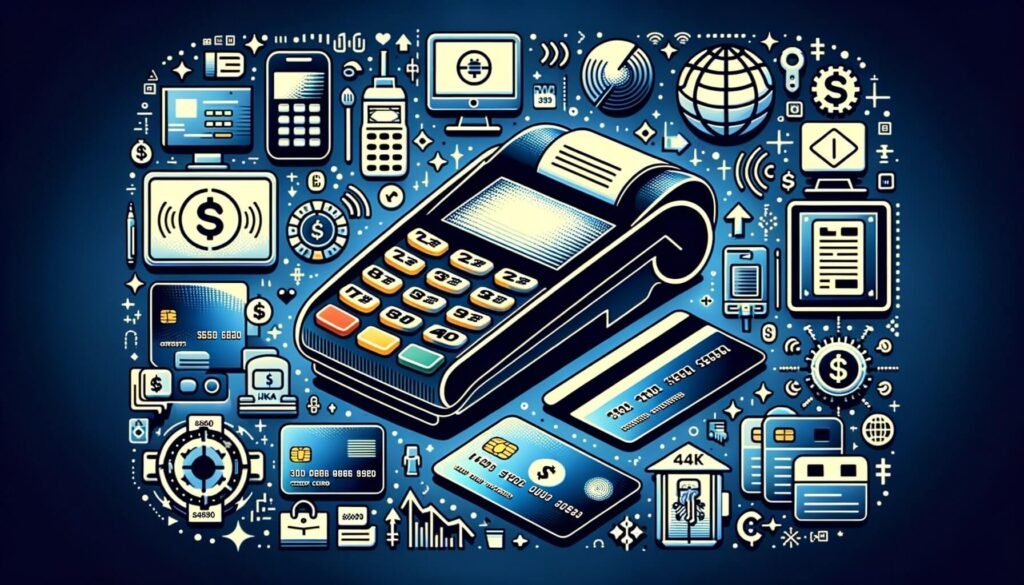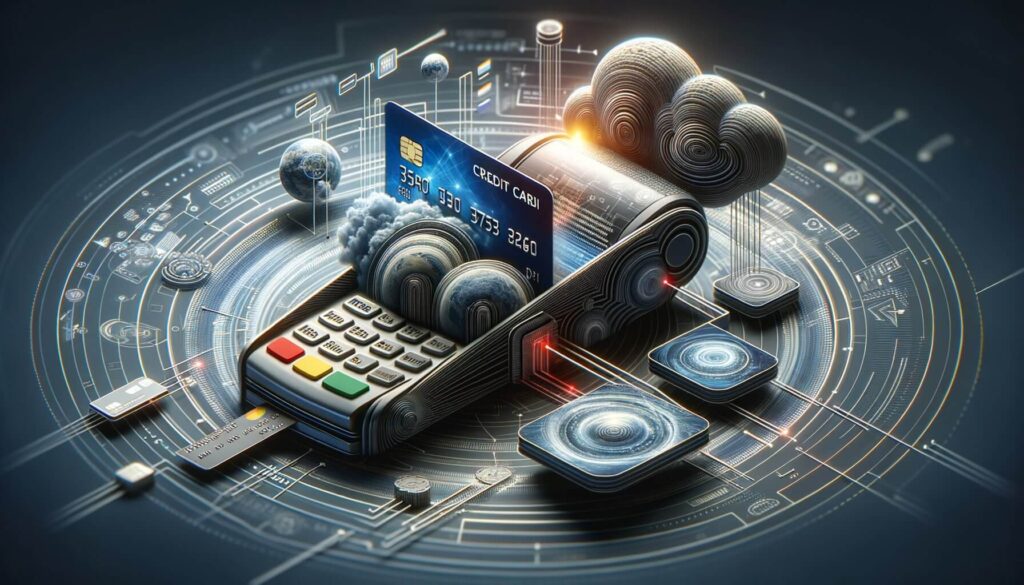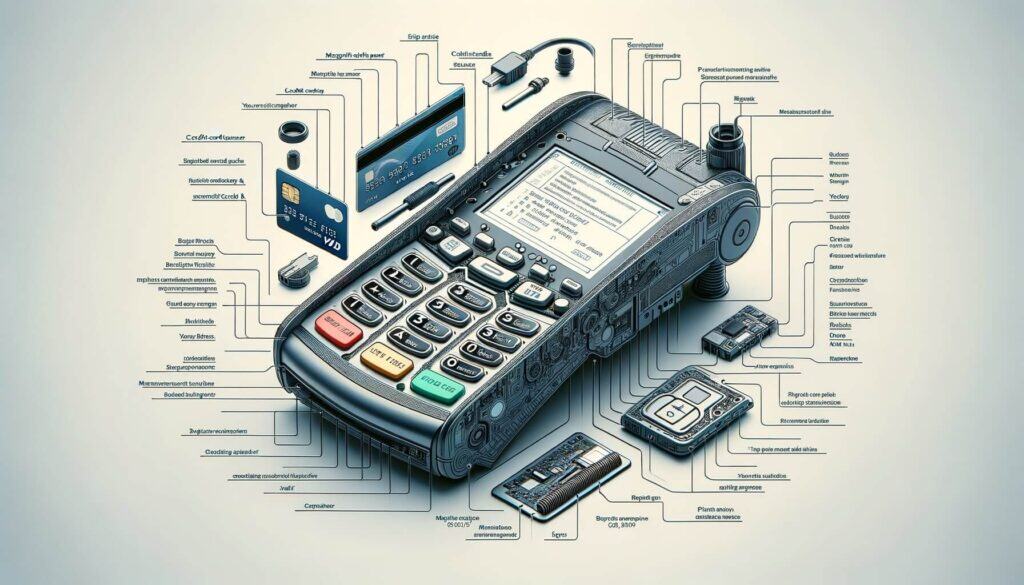
By Crystal Hopkins March 31, 2025
Credit card terminals are electronic devices used by businesses to process payments made with credit or debit cards. They play a crucial role in facilitating transactions and ensuring a smooth payment experience for both merchants and customers.
In this article, we will explore the basics of credit card terminals, their different types, how they process transactions, key features and components, setting up and installing them, troubleshooting common issues, security measures and compliance, and address frequently asked questions.
Understanding the Basics of Credit Card Terminals

Credit card terminals are devices that allow businesses to accept payments from customers using credit or debit cards. They are typically connected to a payment processor or acquiring bank through a wired or wireless connection.
When a customer makes a payment, the credit card terminal securely transmits the transaction details to the payment processor, which then communicates with the customer’s bank to authorize the transaction. Once authorized, the payment processor sends a response back to the credit card terminal, confirming the payment.
Different Types of Credit Card Terminals
There are several types of credit card terminals available in the market, each with its own features and capabilities. The most common types include traditional countertop terminals, mobile terminals, virtual terminals, and point-of-sale (POS) systems.
1. Traditional Countertop Terminals: These are the most common type of credit card terminals found in brick-and-mortar stores. They are usually connected to a phone line or internet connection and have a keypad for entering transaction details.
2. Mobile Terminals: Mobile credit card terminals are portable devices that allow businesses to accept payments on the go. They connect to a smartphone or tablet via Bluetooth or a mobile data connection, enabling transactions to be processed anywhere.
3. Virtual Terminals: Virtual terminals are software-based solutions that allow businesses to accept payments online or over the phone. They are accessed through a web browser and do not require any physical hardware. Virtual terminals are commonly used by e-commerce businesses or those that accept payments remotely.
4. Point-of-Sale (POS) Systems: POS systems are comprehensive solutions that combine a credit card terminal with additional features like inventory management, sales reporting, and customer relationship management. They are commonly used by retail businesses and provide a seamless checkout experience.
How Do Credit Card Terminals Process Transactions?

Credit card terminals process transactions by securely transmitting payment information between the merchant, the payment processor, and the customer’s bank. The process typically involves the following steps:
1. Card Swipe or Insert: The customer swipes their card or inserts it into the credit card terminal. The terminal reads the card’s magnetic stripe or chip to retrieve the necessary payment information.
2. Transaction Details Entry: The merchant enters the transaction details, such as the purchase amount and any additional information required for the transaction, into the credit card terminal.
3. Authorization Request: The credit card terminal securely transmits the transaction details to the payment processor or acquiring bank. The payment processor then sends an authorization request to the customer’s bank to verify if the card has sufficient funds and is not reported stolen.
4. Authorization Response: The customer’s bank reviews the authorization request and sends a response back to the payment processor. The response includes an authorization code if the transaction is approved or a decline message if it is not.
5. Transaction Completion: Upon receiving the authorization response, the payment processor sends the response back to the credit card terminal. If the transaction is approved, the terminal prints a receipt for the customer to sign, and the payment is completed. If the transaction is declined, the terminal displays an error message, and the customer may need to use an alternative payment method.
Key Features and Components of Credit Card Terminals

Credit card terminals come with various features and components that enhance their functionality and security. Some key features and components include:
1. Keypad: The keypad allows merchants to enter transaction details, such as the purchase amount or customer’s PIN, securely.
2. Display Screen: The display screen shows transaction details, prompts, and error messages to both the merchant and the customer.
3. Card Reader: The card reader reads the magnetic stripe or chip on the customer’s card to retrieve payment information.
4. Receipt Printer: The receipt printer prints a physical receipt for the customer to sign and keep for their records.
5. Connectivity Options: Credit card terminals can be connected to the internet or a phone line using wired or wireless connections, depending on the type of terminal.
6. Contactless Payment Support: Many credit card terminals now support contactless payments, allowing customers to make payments by simply tapping their card or mobile device on the terminal.
Setting Up and Installing a Credit Card Terminal
Setting up and installing a credit card terminal involves several steps to ensure proper functionality and security. Here is a detailed guide on how to set up and install a credit card terminal:
1. Choose the Right Terminal: Select a credit card terminal that suits your business needs and requirements. Consider factors such as the type of terminal, connectivity options, and additional features.
2. Obtain a Merchant Account: To accept credit card payments, you will need to set up a merchant account with a payment processor or acquiring bank. This account will enable you to receive funds from customer transactions.
3. Connect the Terminal: Depending on the type of terminal, connect it to the appropriate power source, internet connection, or phone line. Follow the manufacturer’s instructions for proper connectivity.
4. Configure the Terminal: Once connected, follow the terminal’s setup instructions to configure it for your specific business needs. This may involve entering your merchant account details, setting up security features, and customizing settings.
5. Test the Terminal: Before accepting live payments, perform a test transaction to ensure the terminal is functioning correctly. Use a test card or a small transaction amount to simulate a real payment.
6. Train Staff: If you have employees who will be using the credit card terminal, provide them with proper training on how to operate it, enter transaction details, and troubleshoot common issues.
Troubleshooting Common Issues with Credit Card Terminals
While credit card terminals are generally reliable, occasional issues may arise that can disrupt payment processing. Here are some common issues merchants may encounter with credit card terminals and how to troubleshoot them:
1. Connection Problems: If the terminal is not connecting to the internet or phone line, check the cables and connections to ensure they are secure. Restart the terminal and router if necessary. If the issue persists, contact your service provider for assistance.
2. Card Reading Errors: If the terminal is having trouble reading cards, ensure the card is inserted or swiped correctly. Clean the card reader with a soft cloth to remove any dirt or debris. If the problem continues, the terminal may require servicing or replacement.
3. Transaction Declines: If a transaction is declined, check the error message displayed on the terminal. Common reasons for declines include insufficient funds, expired cards, or suspected fraud. Ask the customer for an alternative payment method or advise them to contact their bank for further assistance.
4. Printer Issues: If the receipt printer is not working, check the paper roll to ensure it is properly inserted and not jammed. Replace the paper roll if necessary. If the printer still does not work, contact your service provider for support.
Security Measures and Compliance for Credit Card Terminals
Credit card terminals handle sensitive payment information, making security measures and compliance crucial to protect both merchants and customers. Here are some security measures and compliance requirements for credit card terminals:
1. PCI DSS Compliance: Payment Card Industry Data Security Standard (PCI DSS) is a set of security standards that all businesses accepting credit card payments must adhere to. Ensure your credit card terminal is PCI DSS compliant and follow the necessary security protocols to protect cardholder data.
2. Encryption: Credit card terminals should use encryption technology to secure payment data during transmission. This ensures that sensitive information cannot be intercepted or accessed by unauthorized individuals.
3. Tokenization: Tokenization is a process that replaces sensitive cardholder data with a unique identifier called a token. This token is used for transaction processing, while the actual card data is securely stored by the payment processor. Tokenization reduces the risk of data breaches and minimizes the amount of sensitive information stored by merchants.
4. EMV Compliance: EMV (Europay, Mastercard, and Visa) is a global standard for chip-based payment cards. Ensure your credit card terminal supports EMV transactions to provide enhanced security against counterfeit card fraud.
Frequently Asked Questions about Credit Card Terminals
Q1. Can I use any credit card terminal with my merchant account?
A1. Not all credit card terminals are compatible with every merchant account. Check with your payment processor or acquiring bank to ensure compatibility before purchasing a credit card terminal.
Q2. Can I accept contactless payments with my credit card terminal?
A2. Many credit card terminals now support contactless payments, allowing customers to make payments by tapping their card or mobile device on the terminal. Check the specifications of your terminal to see if it supports contactless payments.
Q3. How long does it take for a credit card transaction to be processed?
A3. Credit card transactions are typically processed within a few seconds. However, the time may vary depending on factors such as the payment processor, the customer’s bank, and the connectivity of the credit card terminal.
Q4. What should I do if my credit card terminal is not working?
A4. If your credit card terminal is not working, first check the connections and restart the terminal. If the issue persists, contact your service provider or the manufacturer’s support team for assistance.
Q5. How often should I update my credit card terminal software?
A5. It is recommended to regularly update your credit card terminal software to ensure you have the latest security patches and features. Check with the manufacturer or your service provider for instructions on how to update the software.
Conclusion
Credit card terminals are essential tools for businesses to accept payments from customers using credit or debit cards. Understanding the basics of credit card terminals, their different types, how they process transactions, key features and components, setting up and installing them, troubleshooting common issues, and security measures and compliance is crucial for merchants.
By following the guidelines provided in this article, businesses can effectively utilize credit card terminals to provide a seamless payment experience while ensuring the security of sensitive payment information.